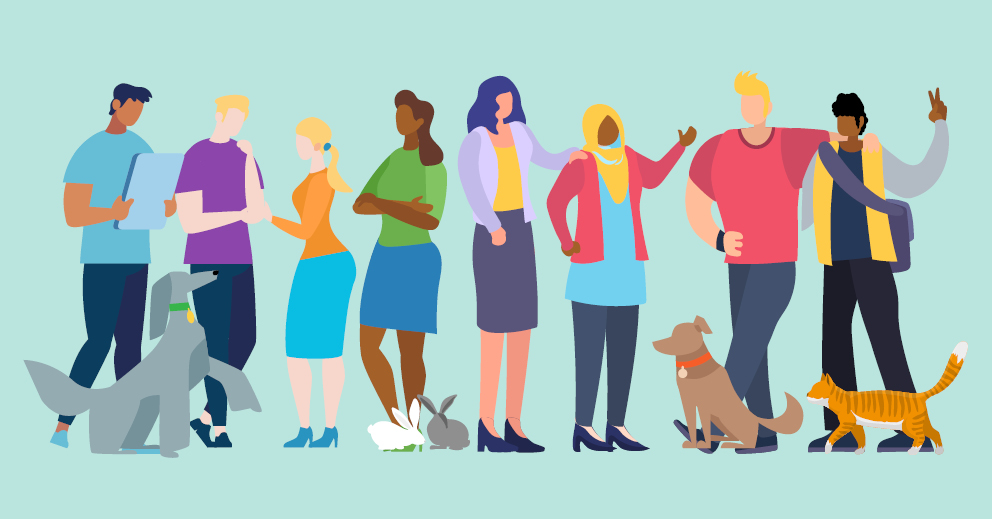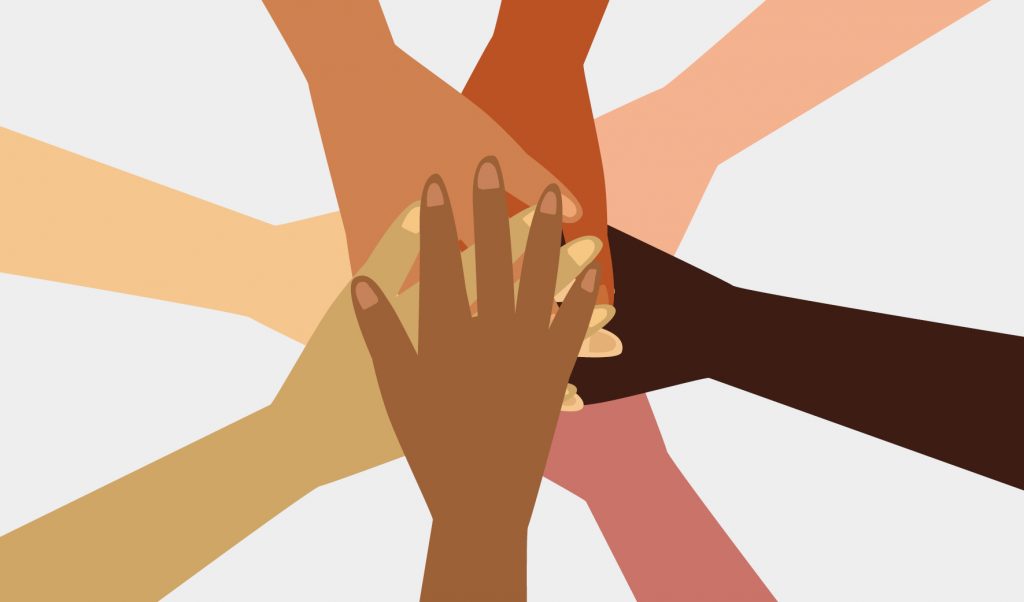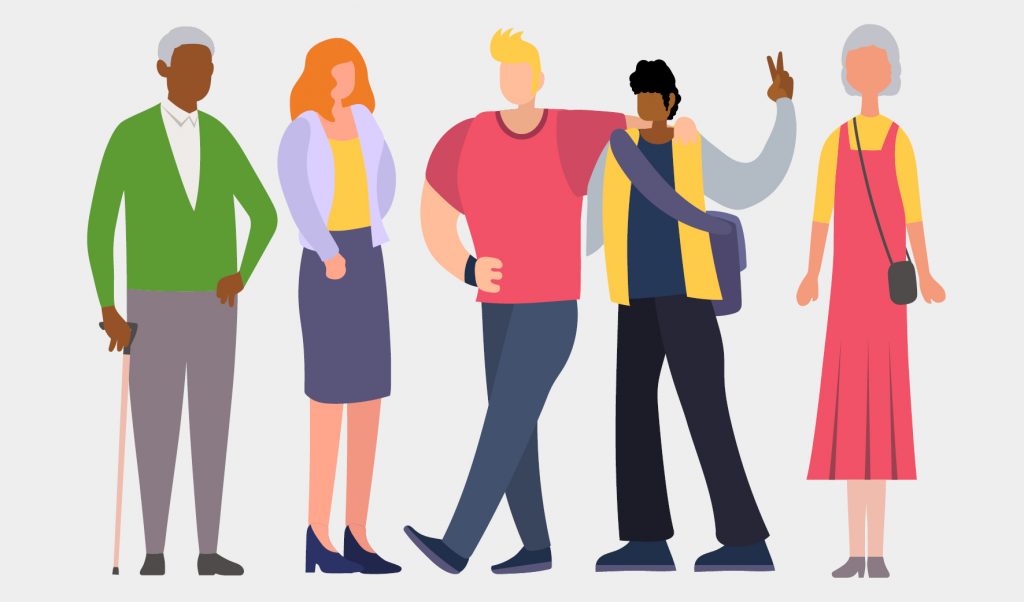Equality, Diversity and Inclusion
At The College of Animal Welfare and CAW Business School, we’re committed to a comprehensive policy of equality, diversity and inclusion for students and prospective students in our admissions policy, in all aspects of our teaching and examining, and in our provision of student services and related facilities.
How we Promote Equality, Diversity and Inclusion
Widening access and participation
We believe that education is an entitlement for all. We make a consistent and comprehensive effort to widen access to our programmes and encourage participation by:
- Providing regular, free careers guidance via our website and
twice annual Careers With Animals Day, to help people
from all backgrounds gain the information and advice they need to begin a career in the veterinary and
animal care industries.
- Running a free jobs board to assist people in finding jobs in the
animal care industry.
- Regularly engaging with local schools and specialist organisations to encourage applicants from
underrepresented backgrounds.
- Working hard to ensure our promotional resources reflect the communities in which we work in.
Fostering a culture of awareness, safety and understanding
The College is committed to fostering a safe environment for all students and staff. We have a zero tolerance policy against bullying and harassment, with clear processes for reporting in place, regular staff training and regular engagement with our students, such as:
- Running mandatory staff training on equality, diversity and inclusion (EDI) and safeguarding.
- Providing a resource hub full of educational information, advice and guidance about EDI topics via our Virtual Learning Environment (VLE) and websites, accessible to all learners and staff members
- Having a robust safeguarding process in place, available for all students and staff to report instances of discrimination and bullying in the workplace or at college. Read our Bullying and Harassment Statement to find out more
- Regularly promoting our monthly highlighted EDI topics across our websites, blogs, social media and digital channels; and ensuring EDI topics are prominent in our centres, including on computer screen savers, posters and display boards in classrooms. Read our latest blogs
- Promoting the British Values of Democracy, Individual liberty, The rule of Law and Mutual Respect and tolerance throughout the college. Read more about how we promote British Values
Providing high quality student support
Our students are treated equally, irrespective of race, colour, nationality, ethnic origin, gender, sexual orientation, marital or parental status, age, disability, political or religious belief, or socio-economic class. We have strong systems in place to support our students irrespective of their background and go the extra mile by:
- Providing 1-to-1 learning support and individual learning plans to help students who’re facing academic difficulties
- Providing regular opportunities for students to express their views about the college's student services via surveys and an online "suggestion box" which is open 24/7.
- Providing extra resources and support to ensure students with conditions such as dyslexia, colour blindness, or those who are hard of hearing, gain access to online learning.
- Setting up our ‘Learning without Limits’ learner project, which allows students free use of IT learner packs such as notepads, dongles, electronic writing pads and online learning materials. Read more about our facilities
- Ensuring all our centres are wheelchair accessible and we have a range of support systems in place to assist disabled and neurodiverse learners to achieve their qualifications. You can read our Disability and Neurodiversity statement to view the full list of measures and support available.
- Giving all CAW students access to free, confidential counselling services.
- Providing a hub of mental, physical and sexual health guidance and information via our "Living Well" area on the VLE.
- Giving all our staff and students access to Together All, a free, anonymous online mental health service that is available 24/7.
- Inviting all CAW alumni to receive our alumni newsletter, to help them stay a part of our community and gain our guidance and support throughout their careers.
Embedding EDI into our processes
We’re committed to a comprehensive policy of equality, diversity and inclusion in our processes and procedures. We do this by:
- Ensuring all our hiring and recruitment processes are carried out in accordance with our equal opportunities policy.
- Regularly using population data and learner statistics to inform planning and to identify opportunities to assist those who are under-represented or excluded in our professions.
- Putting systems and resources in place to enable lecturers to embed discussions about equality into their teaching and learning.
- Ensuring all teaching resources are free from discriminatory images and language, and reflect the communities in which we work in.
Our EDI focus group made up of teaching, HR and senior management staff meet monthly to discuss and continually review our EDI policies, plans and actions to ensure our activity remains effective. To find out more about our commitment to EDI and the steps we take to achieve this, you can download our full Equality and Diversity Policy, and our Equality and Diversity Statement.
Are you a student with us who has a passion for fairness for all?
In the following video you can meet our 'Be the Change - Equality, Diversity and Inclusivity Focus Group' to find out how we are aspiring to strengthen our drive to continually strive to nurture togetherness, to enable all without exception by recruiting some Student Equality and Diversity Champions…
We need our student’s ideas, their thoughts and most importantly their voice – if you are interested in getting involved, please email at us edi@caw.ac.uk to find out more.
We welcome suggestions from our students, staff and wider community to improve how we make the College an inclusive place for all. If you would like to speak to a member of our team about our EDI policies and procedures, please get in touch by calling us on 01480 422060 or emailing us at admin@caw.ac.uk

Race
At the College we have always operated under a zero tolerance policy towards any form of discrimination and strongly oppose racism, intolerance and injustice. We are committed to providing the best support, the best learning experience and the best working environment to all of our students, regardless of racial background. We want you to be confident that racial equality is taken seriously at the College.
We all have a role to play in creating a more safe and equal society. This change begins by arming ourselves with knowledge of bias and prejudice, listening to the experiences of others and standing up against racial prejudice and intolerance in our institutions, workplaces and local communities. As a starting point, we’ve put together some guidance about what we can do to combat racism together:
Educate yourself about racism
It's crucial to learn more about the ways that racism continues to affect our society. Read books, watch videos, listen to podcasts – do your own research and educate yourself in any way that works for you.
Use your online voice to stand against racism
Social media is a powerful tool to promote useful resources, share experiences, highlight injustices and gain support for what you believe in. You can use your platform to amplify voices, share threads/posts with donation links, resources and ways to support action against racism.
Speak up and challenge racism
It's important to be proactively anti-racist and empower yourself and others to challenge poor behaviours to bring about cultural change. This means taking responsibility for tackling racism where you see it.
If you hear people make racist comments or display blatant disrespect, consider challenging their views if it is safe to do so - even if that disrespect is coming from a close friend, family member or colleague. More than this, if you have friends or family who take a different stance on these issues, start a conversation with them and challenge their views. Ask them why they feel the way they do and challenge any biases and negative stereotypes they may have.
You can also get together with like-minded people, and keep the conversation going about how we can do better and discuss what you can do to support the movement towards racial equality.
Support organisations working against racism
Many organisations work hard to dismantle systemic racism and educate the public about racism, but they can’t do what they do without support. Get involved and support organisations who are working against racism, some suggestions are below:
- British Veterinary Ethnicity and Diversity Society – supports those working in the veterinary profession with issues of race, ethnicity, diversity and discrimination
- Animal Aspirations – Student-led initiative which aims to increase diversity in veterinary medicine and animal-related careers through engaging student-led workshops, a positive social media presence and insightful blog posts.
- Show Racism the Red Card – The UKs leading anti-racism educational charity, providing educational workshops, training sessions, multimedia packages, and a whole host of other resources, with the purpose of tackling racism in society.
- Stop Hate UK - Stop Hate UK is one of the leading national organisations working to challenge all forms of Hate Crime and discrimination, based on any aspect of an individual’s identity. Stop Hate UK provides independent, confidential and accessible reporting and support for victims, witnesses and third parties.
- Runnymede - Runnymede is the UK's leading independent race equality think tank. They generate intelligence to challenge race inequality in Britain through research, network building, leading debate, and policy engagement.
Listen to the feelings and experiences of others
The best way to understand racial injustice is by listening to people who experience it. We cannot be afraid to discuss oppression and discrimination for fear of “getting it wrong.” Instead, we need to listen empathetically, validate the experiences of other people and engage in complex conversations about race and injustice, no matter how difficult and uncomfortable they might be. Check in on your friends, family and colleagues; start honest conversations about race and ask what you can do to support people.
Acknowledge your own privileges and biases
It’s important to examine how your background makes you privileged, so you can use this privilege to create change and educate others in your community.
Our experiences shape the way we view the world. Often, some of our experiences produce and reinforce bias, stereotypes and prejudice, which can lead to discrimination. Examining and challenging our own biases, as well as understanding their implications, is the first step towards challenging them.
For example, think: what messages did you receive as a child about people who are different from you? What was the racial and/or ethnic make-up of your neighbourhood or school? These experiences can produce and reinforce bias, stereotypes, and prejudice, which can lead to discrimination. Examining our own biases can help us work to ensure equality for all.
Make your vote count and write to your MP
When the time comes to cast your vote at the ballot box, make sure you’re fully informed and voting for someone who is dedicated to creating a more inclusive and equal society for all. Think about who you vote for. Review the policies and beliefs of the party you want to vote for. More than this, write to your MP about racial injustice and appeal for their support. You can write to your elected representative even if you did not vote for them.
Pregnancy and Maternity
At The College of Animal Welfare, we aim to fully support you if you are pregnant or are a parent studying with us, and we understand that this may have an impact on your studies or work from time to time.
If you are pregnant, we want to ensure that your time at college is as comfortable as it can be during this time. We appreciate your responsibilities and challenges and endeavour to offer you relevant and individual support.
You may well be wondering how your pregnancy will affect your life at college or in the workplace. Take a look at the information we have collated about your rights a pregnant worker and the support you can access:
Your legal rights
Firstly, it’s important to remember that your employer has a duty of care to you and your baby, and you have many employment rights as a pregnant worker. The following list outlines your maternity rights if you are legally classed as an employee*. You should also read your employer’s maternity policy or staff handbook for protocols specific to your workplace. If you are self-employed, an agency or zero-hour contract worker, visit the Maternity Action website for further information about your maternity rights.
Provisions to ensure you and your baby's wellbeing at work
Once an employer is made aware of your pregnancy, they have a responsibility to make provisions to minimise any risks to your pregnancy in the workplace. If there is any risk to your pregnancy that cannot be removed, your employer is required to temporarily adjust your working conditions, or offer suitable alternative work. If neither of these options are possible, you are entitled to paid leave until your maternity leave begins or until it is safe for you to attend work.
Maternity leave and pay
As long as you give the correct notice to your employer, you are entitled to 52 weeks Statutory Maternity Leave if you’re legally classed as an employee, no matter how long you’ve worked for the company. You don’t have to take 52 weeks if you don’t want to, however you must take at least 2 weeks following the birth. Your employment rights (like the right to pay, holidays and returning to a job) are protected during maternity leave.
You may be entitled to either statutory maternity pay, contractual maternity pay or maternity allowance. The legal minimum, provided you meet the criteria required for maternity leave, is stipulated to be 90 per cent of your average weekly earnings before tax for six weeks, followed by an additional 33 weeks of statutory maternity pay (SMP), which is £151.20* per week or a continuation of the previous pay, should it be lower. (*This is correct at the time of publishing. To check current figure please visit gov.uk)
Shared parental leave and pay
You may be eligible to share parental leave and pay with your partner. Check your eligibility here
Right to return to work after maternity leave
If you take maternity leave for six months or less, provided the job still exists you have the right to return to your job on the same terms and conditions as before you left. If you choose to take maternity leave for more than six months, it is legal for you to be offered a similar job if it is not practical for you to return to your old job (provided terms and conditions are just as good).
Alternative work in the event of redundancy
If a redundancy situation arises, you are entitled to another suitable vacancy if one is available. It is only if there is no other suitable work that you can be made redundant. However, the reason for the redundancy has to be genuine. Your pregnancy or maternity leave cannot be the reason for the redundancy.
Time off for attending antenatal appointments
If you are an employee you are entitled to reasonable time off, with pay, for antenatal appointments made on the advice of a registered medical practitioner.
Free prescriptions and dental care
All prescriptions and NHS dental treatment are free while you’re pregnant and for 12 months after your baby’s due date. Children also get free prescriptions until they’re 16. To claim free prescriptions, ask your doctor or midwife for form FW8 and send it to your health authority.
Protection against discrimination
Your pregnancy cannot be used against you in disciplinary, redundancy or dismissal decisions. Under The Equality Act 2010 is it unlawful for your employer to treat you unfairly because you’re pregnant, on/have been on maternity leave or have tried to take maternity leave you are entitled to. This means you can take legal action in an employment tribunal if you feel you have been treated unfairly by your practice.
Accruing annual leave whilst on maternity leave
Whilst on maternity leave you will accrue paid annual leave (including bank holidays) and are entitled to make use of this at some point. Whether you take this leave before or after your maternity leave is a conversation you should have with your employer.
Understanding in the event of pregnancy related illness
If you are unable to attend work because of pregnancy-related illness, this illness is not allowed to be counted towards any review or trigger points in your practice’s absence policy. If, in the four weeks before your baby is due, you are off work with a pregnancy-related illness, maternity leave will begin automatically on the following day.*Additionally, if you’re off work sick because you’ve had a miscarriage your sickness absence should be treated in the same way by your employer as if you were off because of pregnancy-related illness.
Support in the event of premature birth or stillbirth
It’s difficult to think about the possibility of your baby being born prematurely or giving birth to a stillborn baby. Nevertheless, it is important to know that your employer is required to offer appropriate support if this happens. If your baby arrives early, maternity leave will automatically start the day after the birth. If your baby is stillborn after the twenty-fourth week of pregnancy, or if the baby is born alive at any point (even if your baby later passes away) you are still entitled to maternity leave and any maternity pay that you qualify for.
Right to parental leave and time off in emergencies
Parental leave allowance means you are able to take up to 18 weeks of unpaid leave to aid your new baby’s welfare (a maximum of four weeks per child, per year). In most cases, this has to be taken before your child’s 5th birthday. You are also allowed time off to deal with emergency situations affecting your child, with no stipulated time limit – although be aware that whether this is paid or unpaid is left at the employer’s discretion.
Announcing your pregnancy
You should inform your employer of your pregnancy as soon as possible. There are various benefits to telling your employer sooner rather than later:
- It's only once your employer knows you’re pregnant that you're entitled to maternity rights and protected against pregnancy related discrimination
- The earlier your employer knows you’re pregnant, the sooner they can make provisions to ensure you and your baby remain safe at work
- The earlier you tell your manager, the easier it is to plan together how best to tell the people you work with (you can still request that your pregnancy remains confidential until you feel the time is right to tell the rest of your team)
- An earlier announcement means your employer can plan and prepare to meet the operational requirements of the organisation before you leave
- The earlier you announce, the easier it is for your employer to support you if your pregnancy is difficult or you are experiencing morning sickness
Assessing risks in the workplace
Your employer should work with you to assess the physical risks associated with your role, and make adjustments to your duties if needed. These risks should be reassessed regularly throughout your pregnancy to ensure the your workplace remains safe. Assessment should take into account the common symptoms of pregnancy that may pose a risk at work. For example backache, fatigue, more frequent trips to the loo and loss of balance and coordination in later pregnancy.
Usually, workplaces can be easily altered to accommodate the more common symptoms of pregnancy. For example, providing more frequent rest breaks; delegating heavy lifting elsewhere and ensuring you do not handle dangerous chemicals. If you’re concerned about your safety in the workplace don’t hesitate to raise your concerns with your employer.
Returning to the workplace after maternity leave
The thought of returning to work after maternity leave can be a daunting prospect. However, there's no need to worry - it won’t be long before you’re back in the swing of things. Plus, there’s no gap in knowledge that can’t be filled with CPD and a supportive employer. If you’re returning to work after maternity leave, read on to find out what you need to consider…
Continuing Professional Development
As part of your welcome back to the workplace, your employer should be more than happy to assist you in refreshing your skills and knowledge if needed.
Before returning to work it is worth looking at what courses may be available to help you refresh any skills or knowledge you feel is relevant to ease your move back into the workplace. Visit the CAW CPD website
"Keeping in touch" days
It is worth taking advantage of the government’s “Keeping in Touch” days scheme. This scheme allows you to work 10 full or part time days without losing your maternity benefits. Although there is no obligation for your employer to offer these days, or for you to take them, they can be useful for remaining in contact with your workplace and keeping up-to-date with work developments. For example, you may want to use them to attend a training session or team meeting. Alternatively, you could use them to work shorter weeks and return to work more gradually.
Asking for flexible working arrangements
For those returning to work after maternity leave in particular, a problem you may have is that the hours demanded by your workplace may not always be family friendly. Early starts, late finishes, weekend and on-call shifts can be difficult to arrange around childcare. This means that many new mothers can only work part time, or have to find a new job. However, you have the right to ask your employer for flexible or reduced working hours after maternity leave.
Your employer doesn’t have to grant your request if they can show it wouldn’t be suitable for their business. However, most employers will see the value in keeping on their experienced staff, so it is worth asking. Take a look at the The Advisory, Conciliation and Arbitration Service (ACAS) guidance on how to formally request flexible working arrangements.
Further Reading and Resources
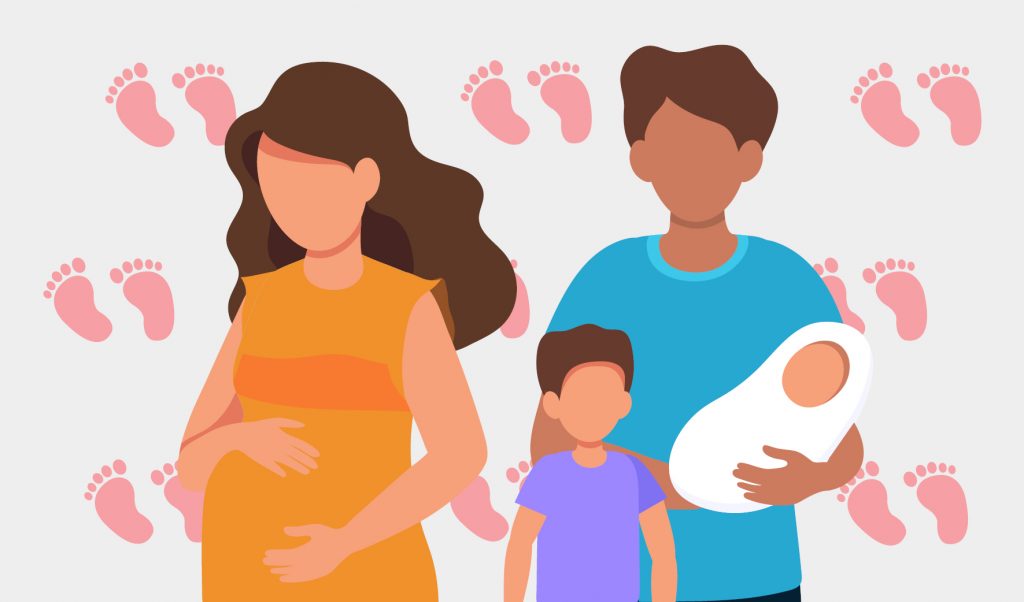
Gender Reassignment
The College of Animal Welfare acknowledges and respects the diversity of bodies, genders and relationships in our community and wider societies.
We all deserve to feel comfortable in our own bodies and to have the freedom to explore and express our gender identity without fear or discrimination. However, hate crime and discrimination against transgender people (people whose gender identity and/or gender expression does not match the sex they were assigned at birth) is widespread* and deeply worrying.
Creating change and progress on equality for trans people should be a priority for all of us. As a starting point, we’ve put together some guidance about what we can do to support transgender people:
How to Support Transgender People
Educate yourself and listen to the experiences of transgender people
The best way to support transgender people, is to listen to their feelings and experiences with an open mind. Not only this, take action by seeking out resources to help you better understand the history of trans rights and gain a better insight into gender identity. Read books, watch videos, listen to podcasts - do your own research and educate yourself in any way that works for you.
Support organisations that support transgender people
Many organisations and charities work hard to support trans communities, but they can’t do what they do without support from others - this includes fundraising support, donations or help from front-line volunteers. Get involved and support organisations who are working towards these aims, some suggestions are below:
- British Veterinary LGBT+ Society - The British Veterinary LGBT+ Society is a group made up of people from all over the veterinary industry. They develop LGBT+ networks, provide sources of help and support, create resources to reinforce open and inclusive working environments, raise awareness of LGBT+ issues in the veterinary profession and spread messages of equality and diversity.
- Mermaids - Mermaids is a British charity and advocacy organisation that supports gender variant and transgender youth.
- Gendered Intelligence - Gendered Intelligence (GI) is a trans-led charity working across the UK to increase understandings of gender diversity.
- Switchboard - Switchboard is a national LGBTQIA+ support line. For anyone, anywhere in the country, at any point in their journey.
Social media can also be a powerful tool to support transgender people. You can use your platform to amplify the voices of transgender people, share threads/posts with donation links, resources and ways to support action against transphobia.
Be patient with someone who is questioning or exploring their gender identity
A person who is questioning or exploring their gender identity may take some time to figure out how they wish to describe themselves and their experiences. For example, someone who is exploring their identity may choose to use one name or pronoun, and then later change the name or pronoun again. It's important to be respectful and use the name and pronoun requested. Even if, in the moment, you don’t understand someone’s identity, you can and should still use the name and pronouns they request.
Speak up and challenge anti-transgender views
Changing attitudes takes time, effort and perseverance. If you hear people make anti-transgender remarks or jokes or purposefully misgender someone, consider challenging their views if it is safe to do so - even if that disrespect is coming from someone you know well. More than this, if you have friends or family who take a different stance on these issues, have a conversation with them about it. Ask them why they feel the way they do and challenge any biases and negative stereotypes they may have.
Respect and use the terminology a transgender person uses to describe themselves
You wouldn't like your identity to be defined by others, so it’s important to allow others to define themselves and respect their choices. There are many different terms transgender people may use to describe their experiences. Respect the term a person uses to describe themselves - whether this be transgender, non-binary, genderqueer and so on.
Some people prefer to be referred to using gender-neutral pronouns such as they/their - use the pronouns someone requests you to. If you're unsure about what pronoun a person would prefer, it's polite to ask, without making a big deal of it. It's better to make sure they're comfortable than make a mistake and make them feel uncomfortable. Wait for an appropriate moment to ask or, alternatively, indicate the pronouns you use first - this gives people an opportunity to say theirs too.
Finally, don't ask a transgender person what their "real name" is. A transgender person’s 'real name' is the name they are currently using.
Refrain from asking unhelpful questions
For transgender people, the gender they are assigned at birth doesn't match with how they feel or identify. There are a lot of myths and misconceptions about what this means, and unhelpful behaviours that can make transgender people feel uncomfortable or erased.
There are many ways to transition and the steps people take to live in the gender with which they identify will differ. Some transgender people access medical care such as hormone therapies or surgeries as part of their transition. However, not all trans people want or are able to have this. Transitioning can also mean changing names and pronouns, changing official documents or dressing differently. If someone wants to confide in you about hormones, surgery, or whatever other steps they've taken/are taking, make it clear that they can, but otherwise do not pry or question them.
Don't ask about a transgender person's genitals, surgical status, or sex life
It wouldn't be appropriate to ask a non-transgender person about the appearance or status of their genitals or how they have sex, so the same courtesy should be extended to transgender people. Don't ask if a transgender person has had "the surgery" or if they are "pre-op" or "post-op." If a transgender person wants to talk to you about this, they will bring it up themselves.
Avoid backhanded compliments and "helpful" tips
While many people intend to be supportive, comments like "I would have never known you were transgender", "You look just like a real woman", or "You're so brave" can be hurtful, patronising or even insulting.
Further Reading and Resources
- Amnesty International Guide to Gender Identity for Beginners
- A Guide to Being an Ally to Transgender and Nonbinary People
- Full Glossary of Terms
- Worried About Your Gender Identity? Advice for Teenagers
- FAQs - All About Trans
- Stonewall Trans Report
- LGBT Foundation Resources for Trans People and Service Providers
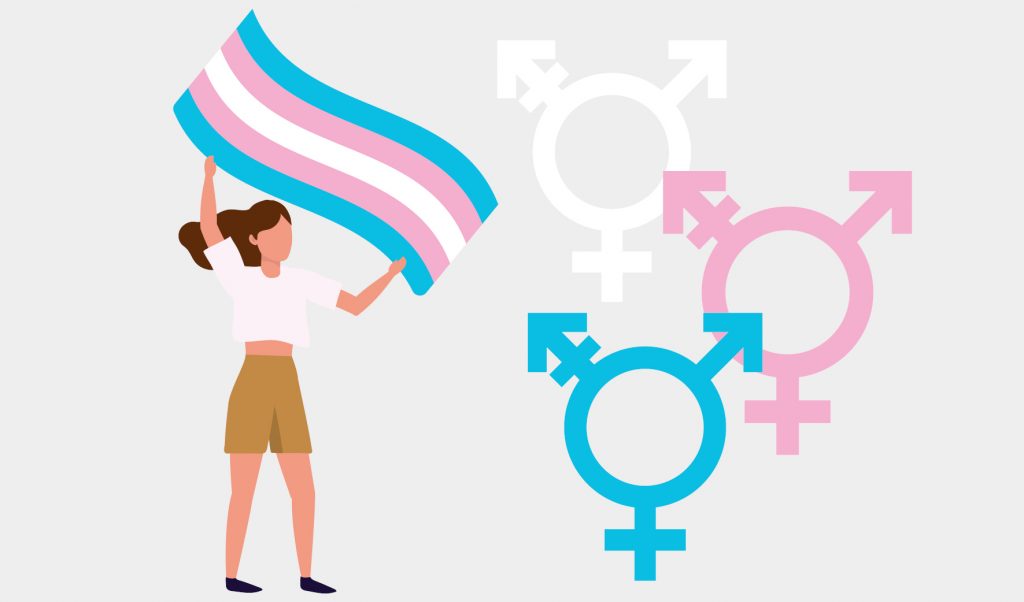
Sexual Orientation
The College of Animal Welfare acknowledges and respects the diversity of sexual orientation and gender identity in our community and wider societies.
We all have the right to express ourselves freely regardless of our sexual orientation or gender identity, and everyone should be able to feel proud of who they are and who they love. There is lots we can do to help promote LGBTQ+ equality and prevent discrimination and homophobia at College and in life. As a starting point, take a look at some of the ways we can do this here:
Understand the history of the LGBT+ movement
It’s crucial that as a society we remember the struggles of those who have fought to give us the lives we have today. Take some time to research the history of the LGBT+ movement in your country and reflect on events that, over the years, have brought about growth and acceptance; so that we can take that learning into the future.
Read on to find out more about key milestones in British LGBT+ history:
- 1951 - Roberta Cowell becomes the first known British trans woman to undergo reassignment surgery. Read more about Roberta Cowell
- 1958 - The Homosexual Law Reform Society is founded to campaign for the legalisation of same-sex relationships in the UK.
- 1972 - The first Pride march takes place in London, attracting around 2000 participants. Today, Pride in London attracts up to a million people, with other events taking place throughout the country.
- 1988 - Prompted by the introduction of Section 28, Sir Ian McKellen and others launch Stonewall (now the largest LGBT rights organisation in the UK) in order to lobby against Section 28 and other barriers to equality. The government later repealed Section 28 in 2003, and passed legislation giving LGBT+ people employment rights.
- 1994 - The UK Crown Dependency of Isle of Man fully decriminalises homosexuality.
- 2000 - The UK Government lifts the ban on lesbians, gay men and bisexual people serving in the armed forces.
- 2002 - Same-sex couples are granted equal rights when applying for adoption.
- 2004 - The Civil Partnership Act is passed and grants civil partnership in the UK.
- 2005 - The first LGBT History Month is launched at the Tate Modern in London.
- 2014 - The Marriage (Same Sex Couples) Act 2013 comes into force.
Make your vote count
When the time comes to cast your vote at the ballot box, make sure you’re fully informed and voting for someone who is dedicated to creating a more inclusive and equal society for all. Think about who you vote for. Look at the records of the party you want to vote for: how have they treated gay people: what laws have they passed to support equality? More than this, write to your MP about LGBT+ issues and appeal for their support. By supporting people who are fighting for laws that are more inclusive of people of regardless of their sexual orientation, you will help LGBT+ people to access better health, education, housing and employment.
Support organisations working to achieve LGBT+ equality
Support organisations working to achieve LGBTQ+ equality
Many organisations and charities work hard to push for LGBT+ equality in all areas of life, but they can’t do what they do without support from others - this includes fundraising support, donations or help from front-line volunteers. Get involved and support organisations who are working towards these aims, some suggestions are below:
- British Veterinary LGBT+ Society - The British Veterinary LGBT+ Society is a group made up of people from all over the veterinary industry. They develop LGBT+ networks, provide sources of help and support, create resources to reinforce open and inclusive working environments, raise awareness of LGBT+ issues in the veterinary profession and spread messages of equality and diversity.
- Human Rights Watch- News, analysis and resources from a human rights perspective, including LGBT rights.
- Stonewall- Group campaigning for the equality of lesbian, gay, bisexual and transgender people across the UK.
- LGBT Foundation- Offers information for LGBT people on sexual health, well-being, groups and events.
Speak up and challenge homophobia
According to research undertaken by Stonewall, one in five LGBT people have experienced a hate crime or incident because of their sexual orientation and/or gender identity in the last 12 months.
You can help oppose a culture of homophobia by calling people out when you hear them make homophobic remarks or jokes. Have honest conversations with people to try and challenge any biases and negative stereotypes they may have.
Further Reading and Resources
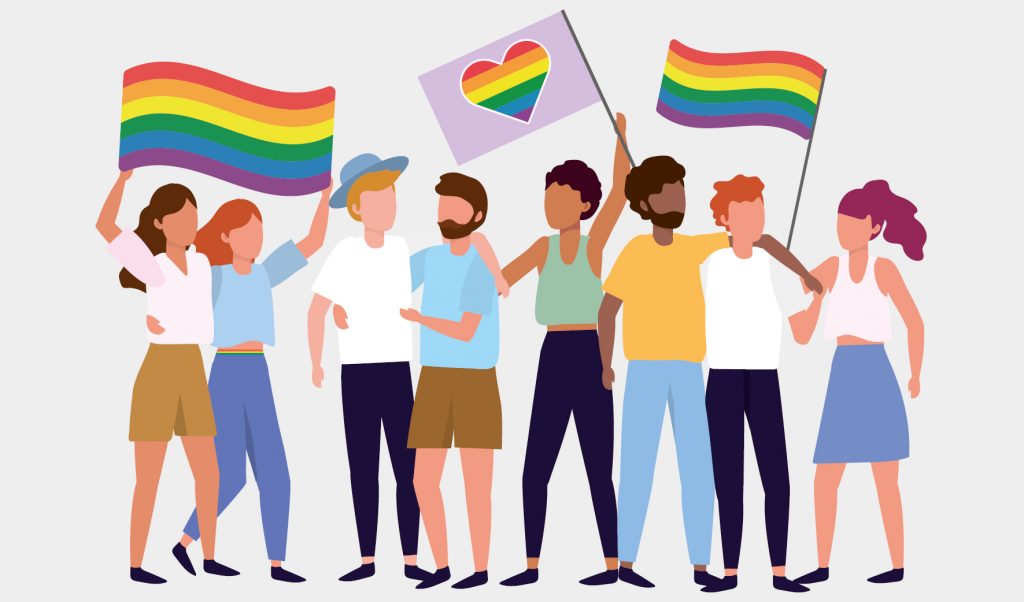
Disability
We understand the many challenges faced by our neurodivergent and disabled learners and we are committed to making The College of Animal Welfare a safe, empathetic and fully-inclusive learning environment. You can view our Disability and Neurodiversity Statement here.
What is disability?
Disability is a name given to the barriers that exist for some people, because their bodies and minds work differently. We need to remove these barriers so that everyone can be included. Here are some examples of how barriers can be removed:
- A person who uses a wheelchair may not be able to access a building with steps. Add a ramp to the building and everyone can use the same entrance.
- Some people learn by reading information, others learn by listening to it, others require pictures or diagrams. When information is presented in more than one way, barriers are removed and everyone has the opportunity to learn.
- Some people find it difficult to make decisions about things when they are rushed, but can do it more easily when they have support and time to think. Making sure that everyone has time to think and ask questions means that everyone can make decisions about their own lives.
How we can support disabled people
Improve accessibility in our homes, schools and workplaces
Creating accessible environments is all about providing people with the most suitable, helpful tools and equipment needed to ensure they can carry out their responsibilities with ease and comfort.
Improved accessibility benefits everyone and creates a far safer and happier environment where people can get their work done and enjoy time spent at home, college or work. Here are some of the most common ways you can make your spaces more accessible for people with disabilities:
- Installing ramps or elevators
- Ensuring parking, doorways and bathrooms have wheelchair accessibility
- Using braille at some of the essential points or areas in the workplace
- Make use of assistive technology such as colour-coded keyboards, refreshable Braille displays, specialised screen reader software, assistive listening devices, speech recognition and sign language apps, and browsers that provide user-friendly and customisable Web interface
- Install larger screens or make use of assistive technology such as screen readers and magnifiers on computers for those with visual impairment
- Providing height adjustable desks and chairs
- Introducing proper cable management and accessible plug sockets to benefit employees with limited mobility
Make sure recruitment processes are accessible and inclusive
Disabled people are more than twice as likely to be unemployed as non-disabled people.*
Your hiring processes should be accessible and inviting to applicants with disabilities. Here are some of the most common ways you can make your hiring process more accessible for people with disabilities:
- Ensuring job postings and online application process is accessible, for example making the job posting available in different formats
- Stating in the job description that qualified individuals with disabilities are welcome to apply and relevant accommodations will be made should their application be successful
- Ensuring interview and testing locations are accessible
- When you hire someone with a disability, or an existing employee acquires a disability through illness or injury, be creative about reasonable accommodations. There isn’t an exhaustive list of what an employer has to do or can do, it is a process that is unique to each person. For example, one person may need a specific type of desk, another may benefit from the flexibility of working from home sometimes.
An inclusive workplace can boost productivity, improve employee morale and help contribute to the development of staff. With proper effort and steps in place, this is something that all companies can strive for and achieve.
Educate people about discrimination and inclusive behaviour
It is essential to encourage an ongoing dialogue with people about the importance of disability inclusion and accessibility. Providing good education and awareness will help to dispel biases and discrimination. People should also be given basic information about how they can help disabled people in cases of emergency.
Treat disabled people with dignity and respect
People with disabilities go to school and college, like having fun, and are part of families. You probably know at least one person with a disability or maybe you have a disability yourself. Remember that we are all different, so not all the following tips will apply to everyone:
- Just be yourself, say hi and make friends as you would with anyone else.
- When you talk to a person with disability, face them and talk to them. Their support person, parent or carer is a different person.
- When you talk to someone who is deaf or has a hearing impairment, make sure they can see your mouth.
- Always introduce yourself when you are approaching or saying hello to someone with vision impairment.
- Some people may have plenty to say but need more time to respond in a conversation, so be patient.
- Do not hold onto a person’s wheelchair or move someone in a wheelchair without their permission, because their wheelchair is part of their personal space.
- Do not pat or speak to someone’s guide dog or service dog. The dog needs to concentrate when working, so always ask the owner first if it is okay to say ‘hello’ to the dog. If they say no, respect their wishes.
- When sending an email to a person who is blind, use text rather than pictures.
- If you are not sure whether someone needs help, just ask.
Neurodiversity
To further support our pledge to neurodivergent learners a collection of ‘Neurodiversity Factsheets’ have been developed to help us better support our learners with additional needs. They include information about common symptoms of various neurodivergent conditions and practical solutions to help in the classroom.
Further Reading and Resources
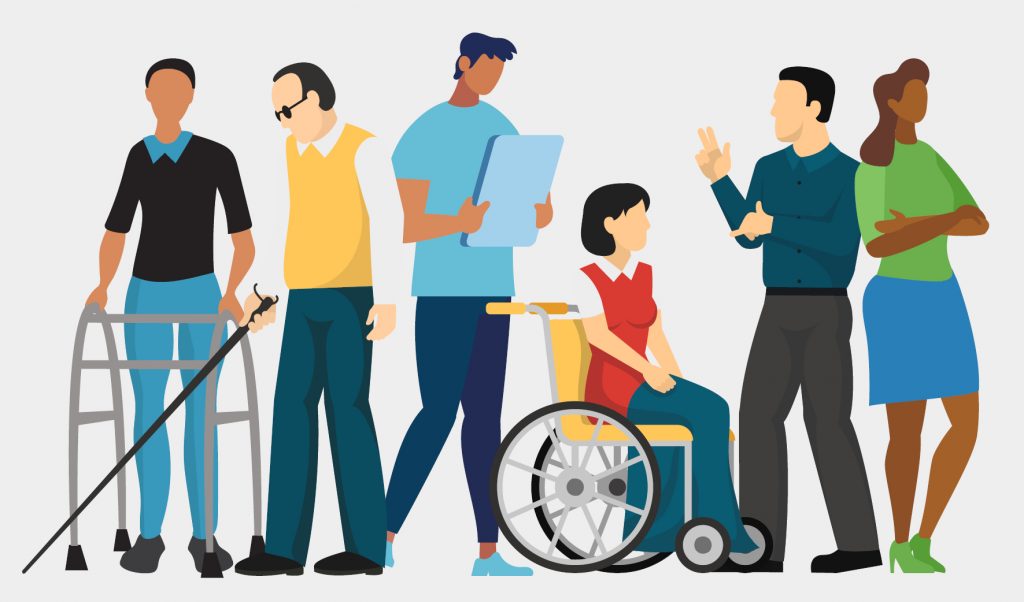
Sex
The College of Animal Welfare is committed to promoting gender equality and maintaining an inclusive learning environment that supports our students irrespective of gender.
Gender discrimination limits people's freedoms and prevents them from reaching their full potential and life aspirations; however, there is lots we can do to help build a more gender-equal world. As a starting point, we’ve put together some guidance about what we can do to promote gender equality:
Educate yourself and listen to the experiences of others
Gender discrimination is when people are treated differently simply because they are male or female, rather than judged on the basis of their individual skills, personality or capabilities.
The first step to tackling a problem is understanding more about it. Take action by seeking out resources to help you better understand the history of gender equality and gain a better insight into gendered issues. Read books, watch videos, listen to podcasts - do your own research and educate yourself in any way that works for you.
Apply principles of gender equality in everyday life
Consider how your gender impacts your life day-to-day, and what you could do to make men and women more equal in your home, school, college or workplace.
Share out household chores
Did you know that, despite entering the workforce in growing numbers in recent years, women still spend almost twice as much time as men on unpaid housework?* Who does the majority of the housework (such as cleaning, cooking and childcare) in your household? Can you share out this work in a more equal way?
Pick up on signs of domestic violence
Almost one in three women aged 16-59 in the UK will experience domestic abuse in her lifetime?*. More harrowingly, two women a week are killed by a current or former partner in England and Wales alone.?*
Domestic abuse is a silent crime in society, disproportionately affecting women and leaving many of its victims feeling unsafe and confused on a daily basis. It can also often be hard for the victim to see their partner’s actions for what they really are, and how they can seek help and support.
Get some help and support if you know a friend or acquaintance is suffering from domestic violence or other abuse. You can help by knowing the warning signs of domestic abuse and understanding what you can do to support others.
Read more about the warning signs of domestic abuse and what you can do to support others
Have conversations about gender norms and stereotypes
If you have friends or family who take a different stance on these issues or hold traditional views on the roles of men and women, start a conversation by asking them why they feel the way they do and challenge any biases and negative stereotypes they may have.
Talk about your own experiences of discrimination
It’s important, if you feel comfortable, to talk about your own experiences of discrimination. This could be highlighting sexist remarks made by your friends or peers or reporting harassment on public transport.
Break down gender stereotypes at home, school and work
We are all influenced by gender stereotypes to some degree - they shape how we expect people to act based on their gender, and we are often judged for how well we adhere to these norms.
However, gender stereotypes can often bleed out into school and work in ways that limit our opportunities for growth and development. For example, women may be less likely to be encouraged into science and technology subjects or leadership roles, due to the perceived “male nature” of these pursuits. Equally, traditional stereotypes such as men being expected to be the “provider” and “protector” of the family, can put unnecessary burden and pressure on men and boys that could be more positively shared in a more equal partnership.
You can set an example to others by questioning assumptions and offering counter-examples from your own experiences.
Speak out against harassment and catcalling
According to research, 64% of women of all ages in the UK have experienced unwanted sexual harassment in public places.*
Harassment makes people feel unsafe and uncomfortable, and is a common example of how someone's right to walk freely and safely around their environment can be restricted. Normalisation of harassment and inaction by bystanders and authorities is one of the ways in which harassment stays prevalent - but you can help by taking a stand if you witness it.
If you hear people make sexist remarks or jokes or objectify someone, consider challenging their views if it is safe to do so - even if that disrespect is coming from someone you know well.
It’s important to say that you shouldn’t always intervene - if your instincts tell you a situation is risky or dangerous, then your own safety is a priority. In some cases, the best course of action when you see discrimination or harassment is to alert an authority figure such as a member of staff on public transport, or perhaps your teacher or boss. Once they are aware of the issues, they will be more likely to step in and be part of the solution.
Challenge objectification and poor representation
Objectification is when a person is viewed and treated as an object without regard to their personality or dignity. It commonly happens in the media where men and women are photoshopped and airbrushed in unrealistic ways. This can affect our body image, our self-esteem and ultimately the value we put on ourselves. Objectification must be called out and we must all be encouraged to tell our own stories - ones that reflect our potential, diversity and personality.
Support organisations working to achieve gender equality
Many organisations and charities work hard to push for gender equality in all areas of life, but they can’t do what they do without support from others - this includes fundraising support, donations or help from front-line volunteers. Get involved and support organisations who are working towards these aims, some suggestions are below:
Women’s Charities
- Fawcett Society - The Fawcett Society is the UK's leading charity campaigning for gender equality and women's rights.
- Young Women’s Trust - Young Women's Trust supports young women aged 18-30, especially those struggling to live on low or no pay, to get into work that is right for them.
- Women’s Aid - Women's Aid is a grassroots federation working together to provide life-saving services and build a future where domestic violence is not tolerated.
- End Violence Against Women - EVAW is a leading coalition of specialist women’s support services, researchers, activists, survivors and NGOs working to end violence against women and girls in all its forms.
Men’s Charities
- Movember - Leading global organisation raising awareness and funds for men's health - specifically prostate cancer, testicular cancer, mental health and suicide prevention.
- Men's Minds Matter - a leading UK organisation working against male suicide.
- Mankind Initiative - organisation supporting men suffering from domestic abuse from their current or former wife or partner. Its confidential helpline is available for male victims of domestic abuse and male victims of domestic violence across the UK.
Further Reading and Resources
- Gender Discrimination in the Veterinary Profession – BVA Employers’ Study
- Gender Equality in the Workplace Resources – Ethical Trading Initiative
- Sex Discrimination Advice and Guidance - ACAS
- Stop Sexism – Human Rights Channel
- Gender Equality and Women's Empowerment - United Nations
- Gender Equality FAQS - United Nations Population Fund
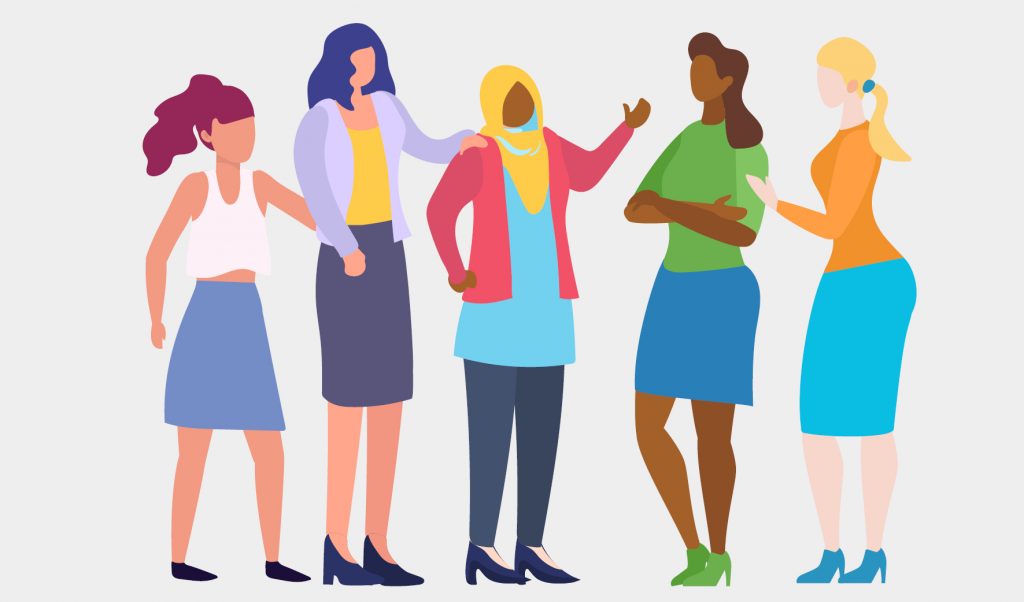
Religion and Belief
The College of Animal Welfare welcomes and celebrates religious diversity in our communities.
We are privileged to have a diverse mix of students and staff at the College that bring a rich variety of religions and beliefs. We are committed to creating a learning environment where religious diversity is respected, and we will support you whether you identify yourself as being part of a particular religion or belief, or whether you identify as having no religion.
We also encourage others to better understand the discrimination and intolerance many people face due to their religion. As a starting point, have a look at what we can do to prevent religious discrimination and intolerance:
Understand the problem of religious discrimination
Take time to learn more about religious discrimination in your country. Read on to find out more about religious intolerance and discrimination in the UK:
- Anti-Semitic incidents in the UK are at an all-time high, with over 700 incidents recorded between January-June 2018 alone (over 100 every month).**
- A million people in the UK have experienced faith discrimination at work.*
- Jewish and Muslim students in the UK are more likely to experience religious discrimination than students from other religious groups, with about a fifth saying they have experienced discrimination or harassment because of their religion.*
- Religious hate crime has increased by 40 percent across England and Wales, with more than half of religiously-motivated attacks in 2017-18 directed at Muslims.*
- Muslims are facing the worst job discrimination of any minority group in Britain, according to research which found that they had the lowest chance of being in work or in a managerial role.*
Campaign for greater leadership on religious discrimination
Contact your local MP and ensure they are showing leadership on religious discrimination. Make sure they understand the needs, issues and priorities of their constituents who belong to religious minorities.
Listen and learn from others
Demonstrating tolerance and respects starts with sincerely listening to others’ perspectives and trying to understand why others think and feel the way they do. This begins a constructive discussion and makes both sides more open to listening to each other.
Educate others on different religious beliefs
Turn your school or workplace into an education hub by encouraging people to learn more about religious discrimination in the UK, talk to each other about different religious beliefs, and read up about their legal rights at work. This way, you can encourage others to report incidents of religious abuse and discrimination when they do occur.
Further Reading and Resources
- Discrimination because of Religion or Belief - Citizen's Advice
- Religion or Belief Discrimination - Equality and Human Rights Commission
- Hate Crime Motivated by Religion - Office of National Statistics
- Exploring Religion in England and Wales - Office of National Statistics
- A Summary of Religions in the World | Religion | Philosohising

Marriage and Civil Partnership
At The College of Animal Welfare, we are committed to supporting all our students and staff, regardless of their marital status. If you are married or in a civil partnership, you will be treated equally and will have access to the same opportunities as students who have a different relationship status.
Age
At The College of Animal Welfare, we believe that it’s never too late to stop learning.
Many of our students come to study with us later in life, perhaps deciding after a career elsewhere that a job working with animals is what they really want to do. Equally, our apprenticeships, work-based learning and functional English and Maths programmes are open to all ages (16+).
Whether you’re studying for pleasure, to gain a promotion or to pursue a career change – we welcome applications from all walks of life and do all we can to create an inclusive environment that allows our students to gain confidence, seek new opportunities and achieve their ambitions at work and in life, regardless of age.
Take a look at the resources and guidance below to read more about how we can tackle age discrimination in our communities:
Rethink what we mean by the term "old"
When you hear the word “old”, who do you think of?
Every person is different and older generations are becoming increasingly diverse in their backgrounds, ambitions and desires, so we shouldn't see certain age groups as all the same.
Treat older people with respect
Treat older people with the respect you expect for yourself. Older people are the same as everyone else, and shouldn't be spoken to in a patronising manner, be spoken about as if they’re not in the room or be spoken to as if they are children.
Don't ignore older people
Many older people report feeling ignored by society, and are more prone to loneliness and social isolation.* Where you can, reach out to older people with a smile, warm eye contact, polite greeting or even a chat. Even the smallest of gestures can help people feel seen and more connected. More than this - check in on your older relatives, friends and neighbours to let them know you care.
Support organisations helping older people
Many organisations and charities work hard to help older people in all areas of life and campaign for better services and anti-ageism legislation; however, they need your help in order to continue to run - this includes fundraising support, donations or help from front-line volunteers. Get involved and support organisations who are working towards these aims, some suggestions are below:
Steer clear of stereotypes and don't make assumptions based on age
Ageist discrimination is often fuelled by negative stereotypes. However, these negative stereotypes are a hurtful form of bias that can affect how we are treated when others perceive us as ‘old' - for example, whether we're considered for promotion, are hired for jobs or seen as valued customers entitled to services.
Behind every older body is a person with individual talents, abilities, intelligence and humour. It’s your job to make sure you’re aware of negatives stereotypes and understand the ways in which unconscious bias may impact your decision making. As an example, don’t assume that just because someone is older, that they’re uninterested in technology and can’t keep up with new technology trends.
Negative stereotypes and assumptions can also affect younger people. For example, don’t assume just because someone is younger, that they are less knowledgeable or experienced.
Avoid and speak out against ageist language/comments/jokes
Ageism can sometimes be subtle and embedded within our everyday language in ways we don’t even think about; other times it is obvious. Either way, you can help to create a more inclusive society for older people by pointing out when you hear someone say something ageist.
Be Aware of Elder Abuse
As we get older, we should all be able to feel safe in our own home. However, older people with care and support needs, (for example, a disability, health condition, mental illness or learning disability) are at a higher risk of being abused or neglected, often by authority figures or people they know and trust. They also may be less able to protect themselves from harm.
If you feel at risk, or are concerned about another person, there are people you can speak to and there is help available. Visit the Age UK website for more information.
Move from anti-ageing to pro-ageing
From product marketing and the fashion/beauty industry, to negatives representations in the media - there are influences all around us that reinforce the idea that aging is bad. If you walk into a health or beauty shop, you’ll often see a wide range of products marketed as “anti-ageing”, reinforcing the idea that getting old is something to be avoided at all costs. Ageing is the most natural thing in the world; we all go through it so we shouldn't be stigmatizing it.
